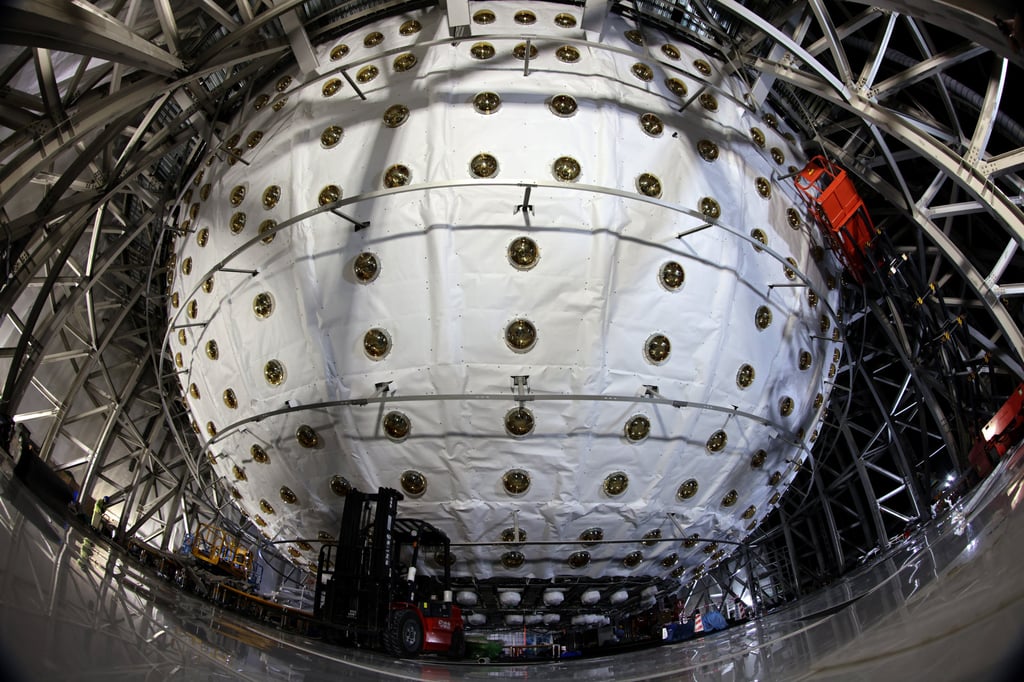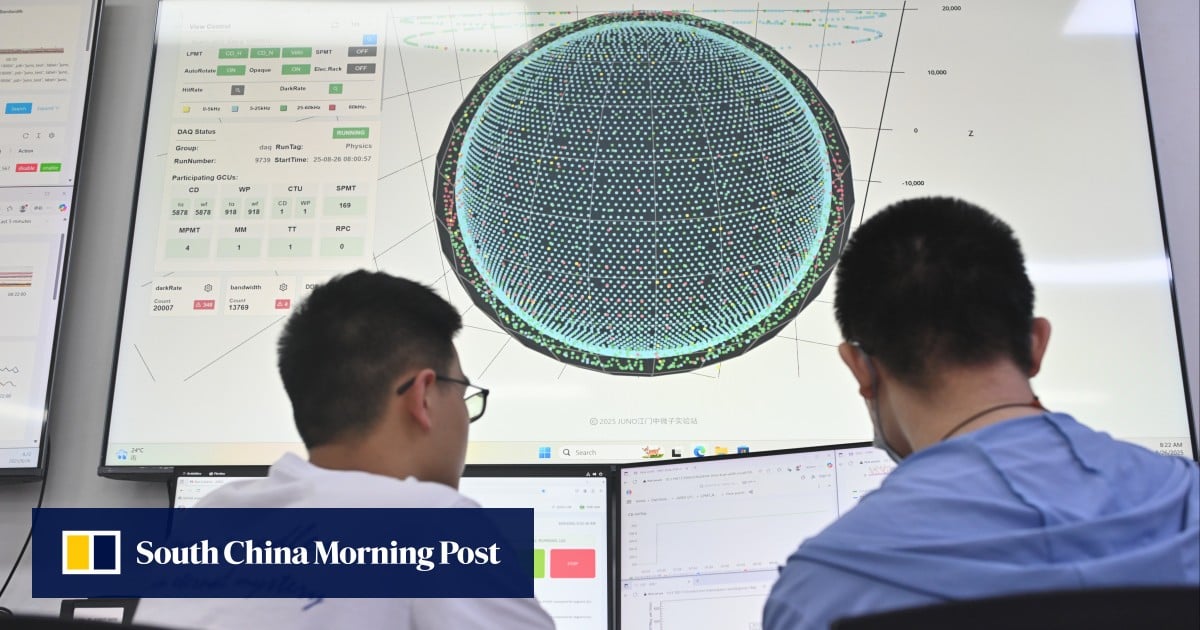China launched the Jiangmen Underground Neutrino Observatory (Juno), the world’s largest detector for elusive “ghost particles” called neutrinos, in southern Guangdong province on Tuesday.
The massive facility has started collecting data for its mission to track the mysterious particles with no electrical charge, very little mass and moving at near-light speed.
The Institute of High Energy Physics of the Chinese Academy of Sciences said Juno had successfully completed filling its 20,000 tonne liquid scintillator detector – a giant acrylic sphere measuring 35 metres (115 feet) in diameter.
The detector is housed at the centre of a 44 metre-deep water pool, located 700 metres below ground. It is meant to measure the mass of different types of neutrinos produced by two nuclear power plants in Taishan and Yangjiang, 53km away.
 A view of the central detector of the Jiangmen Underground Neutrino Observatory while under construction, in Guangdong province in November 2024. Photo: Xinhua
A view of the central detector of the Jiangmen Underground Neutrino Observatory while under construction, in Guangdong province in November 2024. Photo: Xinhua
Particle physicist Wang Yifang, who serves as Juno’s spokesman, called the completion of the filling of the Juno detector and starting of data-taking “a historic milestone”. The Chinese Academy of Sciences proposed the international project in 2008.
